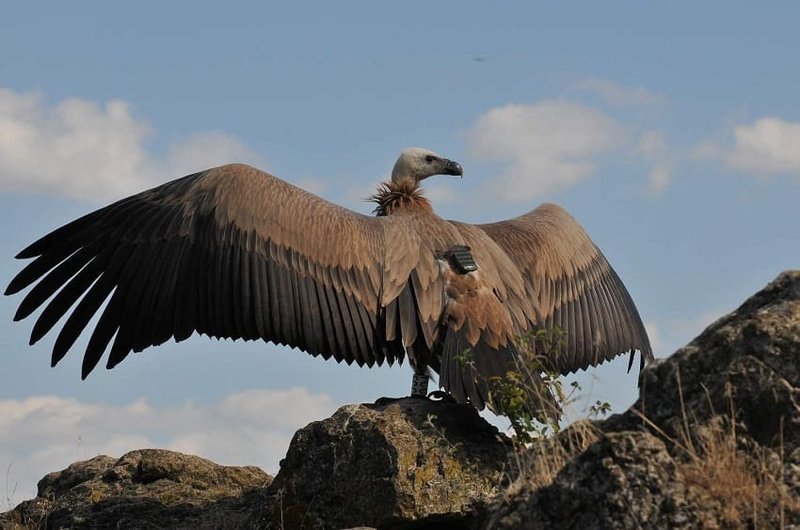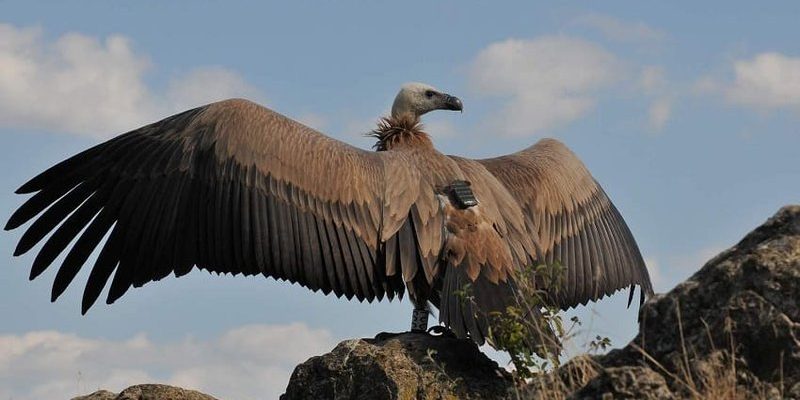
Understanding the global habitats and ranges of griffon vultures can be likened to piecing together a fascinating puzzle. You might be wondering where to look for them, and the answer isn’t just simple. These birds roam across various landscapes, from the rugged mountains of Europe to the sun-baked plains of Africa and beyond. Let’s explore where you might catch a glimpse of griffon vultures, what they like in a habitat, and why knowing their ranges matters.
What Are Griffon Vultures?
Before diving into where to find them, let’s get acquainted with our feathered friends. Griffon vultures (Gyps fulvus) are large, with a distinctive appearance. They boast broad wings, a stout neck covered in downy feathers, and a unique hooked beak that’s perfectly designed for tearing into carcasses. These birds are social and often seen soaring in groups, circling high above the land.
One of the most exciting aspects of griffon vultures is their impressive nesting behavior. They typically build their nests on cliffs or rocky ledges, which offer protection from predators. This preference for elevated terrain often leads them to remote and isolated areas, making sightings a delightful challenge for birdwatchers and nature lovers alike.
Where Griffon Vultures Live: Regional Overview
Griffon vultures can be found across a range of regions, primarily in Europe, Africa, and parts of Asia. Each of these areas has its unique characteristics that attract these scavengers.
In Europe, you can spot griffon vultures in countries like Spain, France, and Greece. The rugged mountains and vast open spaces provide perfect feeding grounds. For example, the Sierra de Cazorla in Spain is a famous spot where these vultures can be seen gliding majestically above the landscape.
Africa is another hotspot for griffon vultures. You’ll often find them in open savannahs and mountainous regions, where they can easily spot their next meal from high above. The Atlas Mountains in Morocco are particularly known for hosting large populations of these birds. Their ability to thrive in different environments showcases their adaptability.
Then there’s Asia, where griffon vultures inhabit areas stretching from the Himalayas to the Tibetan Plateau. Here, they find plenty of food sources, thanks to the diverse wildlife in these mountainous regions.
The Perfect Habitat: What They Need
Griffon vultures thrive in habitats that provide not only food but also safe nesting areas. So, what exactly makes a perfect home for them?
They prefer open landscapes where they can spot food from high altitudes. Think of grasslands, mountains, and rocky cliffs—these are ideal for the birds to soar with ease while searching for carrion. They often rely on thermals—rising columns of warm air—to glide without spending much energy, allowing them to cover large distances in search of a meal.
Another critical factor is the availability of food sources. Fortunately, these scavengers feed on the remains of dead animals, which can often be found in agricultural areas or near large wildlife populations. That’s why you might see them around national parks, where animal carcasses are part of the natural cycle.
Best Places to Spot Griffon Vultures in Europe
If you’re in Europe and keen to see griffon vultures up close, several places stand out.
– Spain: The Los Cahorros and Sierra de Cazorla are must-visit spots. It’s not uncommon to see dozens of vultures soaring overhead. The local wildlife and scenic views make this a perfect day trip for nature enthusiasts.
– France: In Vaucluse, you can find them around the Luberon Natural Park. With its rugged cliffs and open terrain, it’s a great place to watch these vultures nest and hunt.
– Greece: The Samaria Gorge in Crete is known for its impressive biodiversity. As you hike through, keep your eyes peeled for griffon vultures gliding above.
These locations aren’t just great for birdwatching; they also serve as fantastic reminders of the natural beauty found across Europe.
Spotting Griffon Vultures in Africa
Africa offers some stunning vistas to catch a glimpse of griffon vultures.
– Morocco: The Atlas Mountains are rich in birdlife, and griffon vultures make a dramatic spectacle against the backdrop of these peaks. Various tours offer guided excursions to observe these magnificent birds in their natural setting.
– Kenya: While not as common as in the north, you might find them around national parks like Masai Mara, where they often feast on the remains after the great wildebeest migration.
The thrill of spotting griffon vultures in their native habitats is a journey filled with breathtaking landscapes and fascinating wildlife.
Asian Habitats: Where to Seek the Griffon Vulture
As we turn our gaze to Asia, there are several remarkable places to spot these splendid birds.
– Himalayas: The high-altitude regions are excellent for griffon vultures, especially when migrating or nesting. Areas around Nepal often have hiking trails where these birds can be seen.
– Central Asia: In regions like Tajikistan, vast steppes and mountainous terrains create ideal conditions for griffon vultures to thrive and find food.
When exploring these areas, the combination of stunning scenery and the chance to see these vultures in action is truly invigorating.
The Conservation Status of Griffon Vultures
It’s worth noting that, despite their impressive numbers in some regions, griffon vultures face challenges. Habitat destruction, poisoning, and reduced food availability have led to declines in certain areas. Here’s the thing: they are a crucial part of the ecosystem, and their loss would have significant consequences.
Conservation efforts are underway to protect their habitats and promote awareness. Many parks and wildlife sanctuaries have implemented measures to ensure these vultures can thrive. It’s vital for birdwatchers and nature lovers to support these initiatives, as every little bit helps in preserving the beauty of nature.
Tips for Birdwatching: How to Spot Griffon Vultures
Now that you’re excited about spotting griffon vultures, here are some tips to make your outing successful:
1. Choose the Right Time: Early mornings or late afternoons are often the best times to see these birds in flight. They are more active during cooler parts of the day.
2. Find High Ground: Look for vantage points like hilltops or cliffs where you can scan the skies. Bringing binoculars can help you get a closer look from a distance.
3. Be Patient: Birdwatching can require some time. Enjoy the scenery while waiting for a glimpse of these magnificent vultures.
4. Join a Guided Tour: If you’re not familiar with the area, consider joining a birdwatching group. Experienced guides can share valuable insights and increase your chances of spotting them.
In conclusion, the griffon vulture is more than just a bird; it’s a vital player in our ecosystem. By understanding their habitats and recognizing where you can spot them, you can appreciate their role in nature. So, grab those binoculars and get ready for an adventure into the wild! Whether soaring above the mountains of Europe or gliding over the savannahs of Africa, these magnificent creatures are waiting to be discovered.

